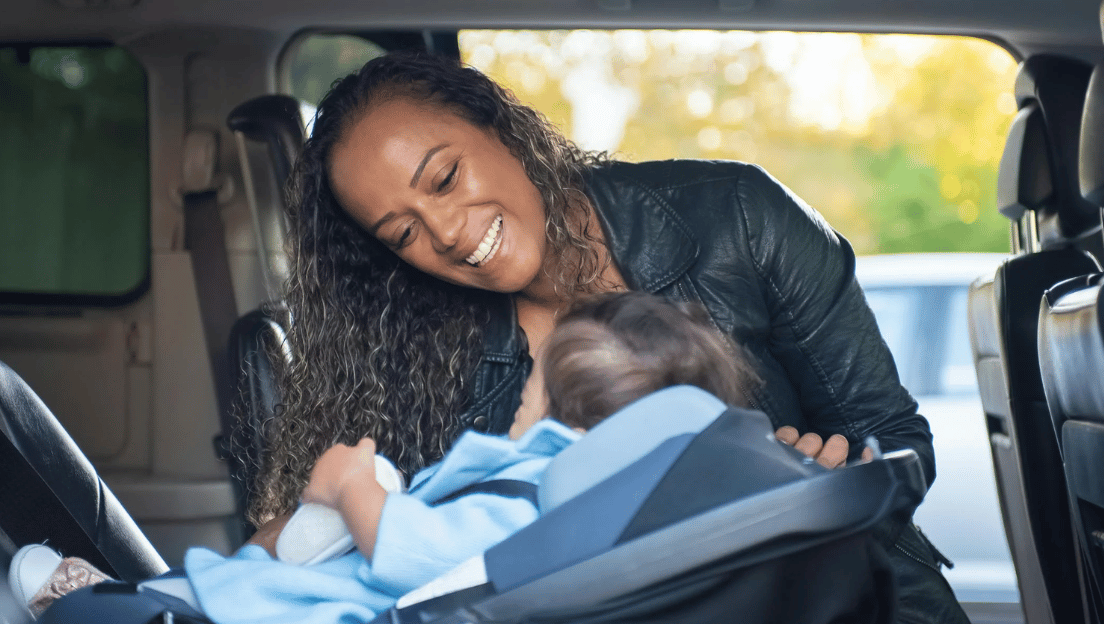Moving your child from a baby capsule or car seat to a larger seat can feel like a big step, and it is. Knowing when and how to switch can make all the difference for your child’s safety. Each car seat stage is designed for a specific size, age, and behavior level.
So, while your baby may seem ready, safety depends on more than age. From snug infant seats to convertible car seats and harnessed boosters, there’s a right time for each move. There are important things every parent needs to know before making the next car seat transition.
Understanding Car Seat Stages
Choosing the right car seat for your child means understanding how each stage works—and when to move to the next one.
Stage 1 is the baby capsule. This rear-facing seat is for newborns and young infants. It protects them by supporting their head, neck, and spine in the event of a crash. Most capsules clip in and out of the car, making them easy for on-the-go parents.
Stage 2 is a convertible car seat. Once your baby outgrows the capsule (usually around 12 months), they move into this seat. It starts rear-facing and then turns forward as they grow (we recommend keeping your child rear-facing for as long as possible). It has a 5-point harness to keep them secure.
Stage 3 is the booster seat, which comes in two types: harnessed and belt-positioning. A harnessed booster adds extra security for younger kids, while a belt-positioning booster uses the car’s seat belt when the child is ready.
Each stage matters. It’s not just about age. It’s about fit, behaviour, and safety. For trusted car seat options through every stage, see Maxi-Cosi. They offer a range of seats designed to grow with your child, giving safety and comfort the priority they deserve.
When to Move Out of the Baby Capsule
Every baby capsule lists height and weight limits. Once your little one reaches the required measurements or their head is within an inch of the top, it’s time to consider the next stage.
Parents often notice fit issues before the numbers do: the straps start digging in, or the headrest feels too low. That’s a clear sign they’re outgrowing the capsule.
Once this happens, it’s time to transition. Rear-facing car seats remain the safest option. It best supports the head, neck, and spine in case of an accident. Experts say to keep kids rear-facing as long as possible.
So, follow the limits, watch your child’s fit, and ride rear-facing until they’ve simply outgrown the capsule. It’s the safest, most secure choice for those early years.
The Forward-Facing Phase
Once your child outgrows the rear‑facing limits, it’s time for a forward‑facing seat using a 5‑point harness. This system—with straps at both shoulders, hips, and the crotch—offers top-notch protection.
Proper installation is key: use either LATCH or the seat belt (never both), and always attach the top tether to reduce forward movement.
The shoulder straps should be level or just above the shoulders, and the harness should be snug enough to pass the “pinch test” with no slack at the collarbone. With the right seat, setup, and timing, your child will ride forward safely and confidently.
The Booster Seat Transition
Moving from a forward-facing harness seat to a booster isn’t just about size. It’s about safety, behaviour, and proper belt fit.
You’ll typically need a shoulder and lap belt; your child should meet the seat’s minimum weight. They should also sit properly throughout the drive, no slouching, leaning, or playing with the belt.
Harnessed vs. belt-positioning boosters: Harnessed boosters keep the 5-point harness. This is ideal when your child’s still young and wriggly. Belt-positioning boosters use the car’s seat belt and work when the child consistently sits upright with a proper belt fit.
Your child is ready when they meet weight/height requirements and can sit reliably. That means staying seated, with the belt across the hips and chest, without constant fidgeting. In short, the right timing and seat choice set the stage for a safe, confident transition.
Safety Considerations at Each Stage
A mistake at any stage can compromise your child’s protection, even with the best car seat. Common installation errors include loose seats, incorrect harness heights, skipped top tethers, and unapproved accessories.
Proper fit matters just as much. The seat should move no more than an inch at the belt path, straps must be snug (no more than a finger’s pinch at the shoulder), and the chest clip should sit at armpit level.
Behavioural readiness isn’t just about size. If a child fidgets, slouches, or attempts to loosen straps, they’re not ready for the next stage. Even if they hit the weight limit, always check the fit, secure installation, and your child’s behaviour. Skipping steps may seem quicker, but can put your child at serious risk. Always prioritise safety over convenience.
Safety First, Every Step of the Way
Every car seat stage matters, from baby capsule to convertible seat to booster. It’s not just about age or size. It’s about fit, behaviour, and secure installation. Taking the time to get each transition right keeps your child safer on every ride. Don’t rush the process—prioritise protection over convenience.




